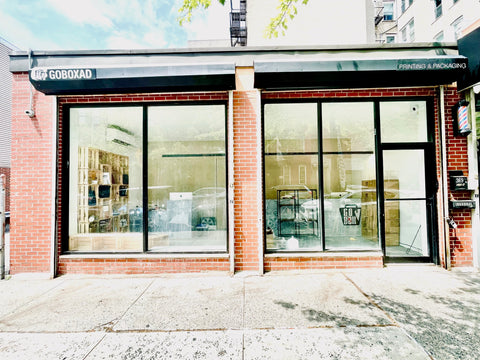A Step-by-Step Guide for Restaurant Owners Who Want Results
A well-designed menu isn’t just a list of items—it’s your most powerful sales tool, branding asset, and customer guide. Yet many restaurants treat menu design as an afterthought.
Whether you’re opening your first café, revamping a bistro, or launching a seasonal refresh, this guide walks you through everything you need to create a custom printed menu that works for your business (and your customers).
Step 1: Understand What Type of Menu You Need
First, ask yourself:
| Menu Type | Best For |
|---|---|
| Dine-in Menu | Full-service restaurants, bistros |
| Takeout/Delivery Menu | Pizzerias, fast casual spots |
| Digital/QR Code Menu | Trendy cafés, high-volume eateries |
| Table Tents/Mini Menus | Upselling drinks, desserts, specials |
| EndurACE Waterproof Menu | Outdoor patios, bars, sticky fingers |
🔎 Pro Tip: You don’t have to choose just one. Many successful restaurants use a combination to maximize reach and sales.
Step 2: Structure Your Menu Like a Sales Funnel
A good menu guides decision-making.
-
Highlight signature items with icons, frames, or high-quality images.
-
Use strategic placement: top-right of the page is prime real estate.
-
Group items by type (e.g., appetizers, mains, drinks).
-
Keep descriptions short—but flavorful. Use sensory words like “crispy,” “velvety,” or “spiced.”
🧠 Design psychology: Most diners scan in a Z-pattern. Lead their eyes to your bestsellers.
Step 3: Design for Brand & Readability
Here’s what to focus on:
-
Fonts: Use 1–2 max. Choose legible, modern fonts.
-
Colors: Match your brand palette. Ensure contrast for readability.
-
Photos: Only use high-resolution, appetizing images.
-
Spacing: White space makes menus easier to read and more premium-feeling.
⚠️ Avoid clutter! Too many items or styles can overwhelm the reader and reduce average ticket size.
Step 4: Choose the Right Material & Finish
Your menu should feel as good as it looks.
| Material | Why Choose It |
|---|---|
| Glossy or Matte Cardstock | Premium look, good for dine-in |
| Waterproof Synthetic (EndurACE) | Durable, washable—great for outdoor and bars |
| Folded Brochures | Ideal for takeout and to-go bags |
| Laminated Menus | Reusable and easy to clean |
🌿 Tip: Eco-conscious? Ask about recycled paper or biodegradable coating options.
Step 5: Print Smart
Printing isn’t one-size-fits-all. Choose based on:
-
Menu Size: (e.g., 8.5” x 11”, 11” x 17”)
-
Quantity: Start with low MOQs if you plan to test or update frequently
-
Finish: Matte, gloss, soft-touch—each gives a different tactile impression
-
Binding/Folding: Flat, tri-fold, Z-fold, or even booklet-style
💡 We recommend tri-folds for takeout, EndurACE for high-use dine-in, and table tents for promos.
Step 6: Test, Improve, Repeat
Once your menu is printed:
-
Track sales before and after introducing it.
-
Ask customers what they noticed or liked.
-
Review items that aren’t selling—maybe it’s the placement, not the price.
-
Update seasonally or quarterly to keep things fresh.
📊 Data-backed menus sell better. Use your POS insights to guide updates.
Final Thoughts: Great Menus Don’t Just Inform—They Perform
Your printed menu should do more than list dishes—it should:
-
Reflect your brand identity
-
Encourage higher ticket orders
-
Improve the dining experience
-
Strengthen customer loyalty
Don’t settle for generic templates or smudgy prints. You deserve a menu that tells your story and sells your food.
Need help designing or printing your next menu?
We offer:
-
Design support
-
Waterproof EndurACE menus
-
Table tents, takeout menus, and more
-
Fast turnaround and low minimums
Let’s bring your menu—and your brand—to life.
Would you like this turned into a PDF menu design checklist or printable handout for your staff? Just let me know!




